-
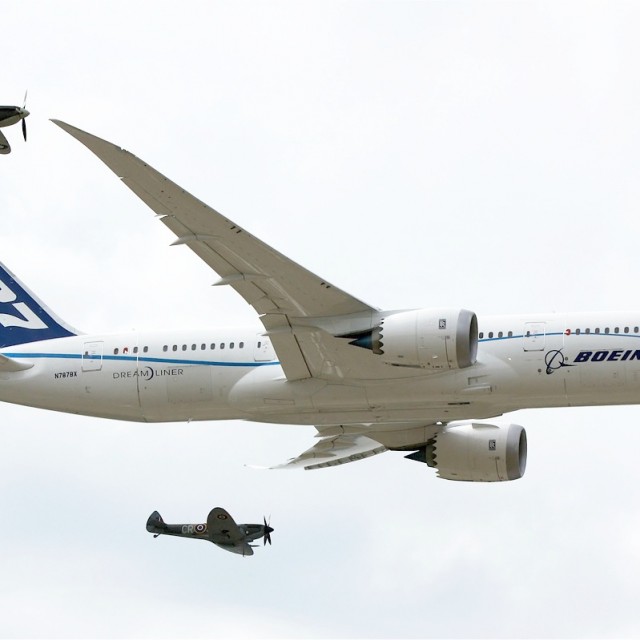
-
Boeing 787 Dreamliner at Farnborough with Spitfires (click for larger)
-
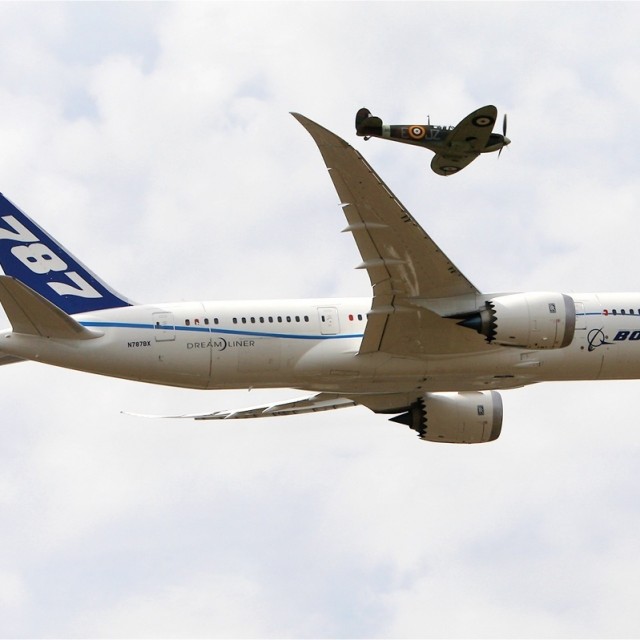
-
Boeing 787 Dreamliner at Farnborough with Spitfires (click for larger)
-
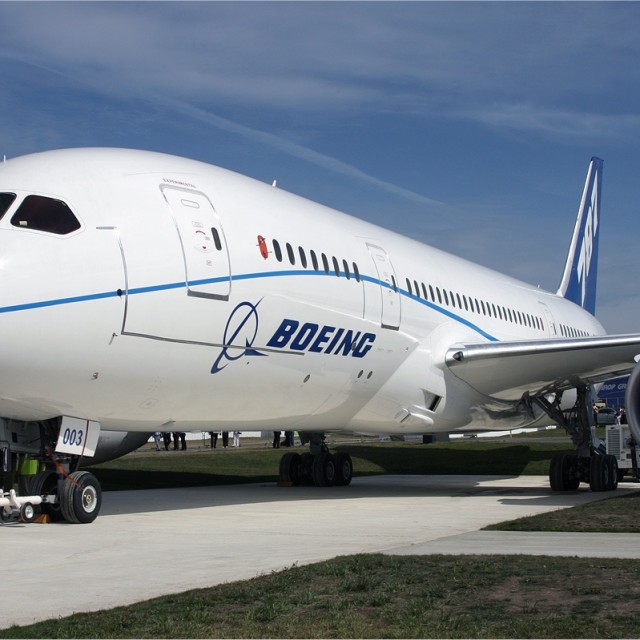
-
Boeing 787 Dreamliner at Farnborough (click for larger)
-
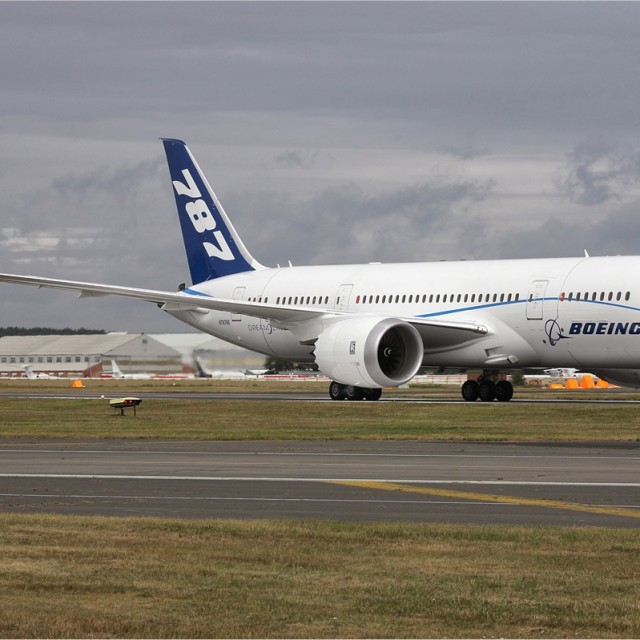
-
Boeing 787 Dreamliner at Farnborough (click for larger)
-
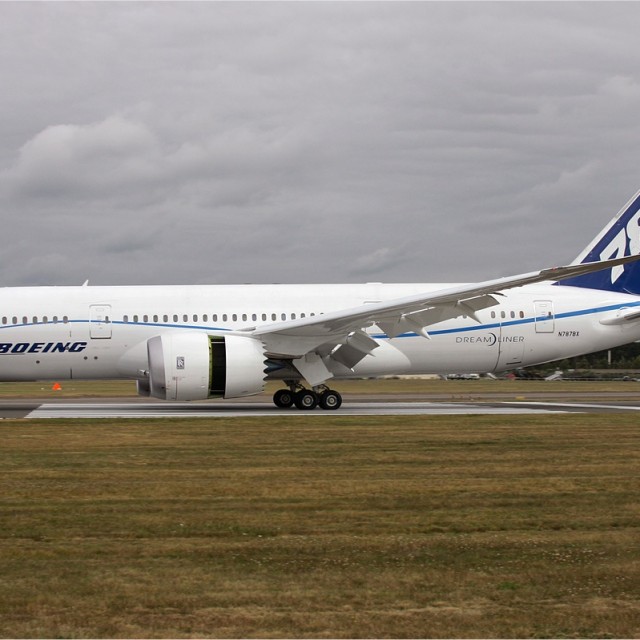
-
Boeing 787 Dreamliner at Farnborough (click for larger)
-
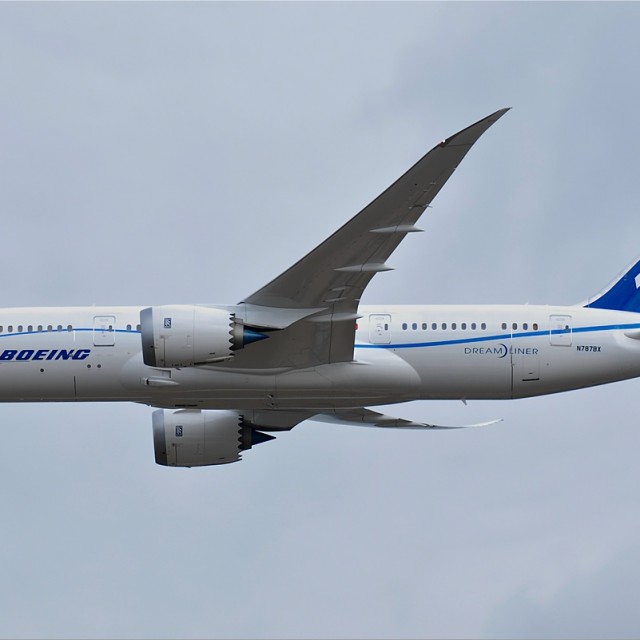
-
Boeing 787 Dreamliner at Farnborough (click for larger)
If you follow aviation or airlines, you probably heard about the Boeing 787 Dreamliner going to the Farnborough air show recently. It going was awesome, but it leaving was pretty cool too. Not the fact that it left, but how it left…being escorted by two Spitfires.
All photos from Boeing

Drawing of Davinci's Ornithopter
Introduction from David: My mom has always loved birds and I have always loved planes. We have talked about the similarities a lot and she loves reminding me how birds were around before planes. I asked if she wanted to put some thoughts down for a blog on the concept of birds, planes and flight and she was more than happy. Here are her thoughts in her own words…
For eons and eons, birds had the skies to themselves. Even though there were insects and bats, birds were the dominant aviators.
Man would look up to the skies from Earth and marvel at the wonder of flight. The shepard with his flock, the fisherman at sea, the Indian on the plains would enviously wish that some day they could soar above the mountains, prairies and oceans.
For thousands of years, Man could only wish for flight, so the birds were free to tease the earth-bound. As the years progressed, humans began to study birds and how they can defy gravity. It probably began in China in about 400BC with the invention of kites.
Wings were obviously important to flight. Many early attempts at flight tried using the flapping of wings like birds. These attempts all failed because the shoulder muscles of birds are so much stronger than humans, plus the fact that birds have hollow bones, making them much lighter.
So Man floundered in his experiments with flight.
The turning point seems to have begun during the Renaissance with a man named Leonardo Da Vinci. Yes, that Da Vinci! He was a scientist and inventor as well as an artist. He was intrigued with flight and believed humans could conquer it. In 1485, Da Vinci wrote, “The bird is a machine that operates according to mathematical law. It lies within the power of man to make this instrument with all its motions”. To try to prove this statement, DaVinci produced a hundred drawings of what he called the ornithopter, and even though there is no proof that he created a model that flew, it is considered the forerunner of the helicopter.
So Man began to realize that perhaps it was possible to break the bounds of gravity and soar like an eagle!
It took another 300 years for the hot air balloon to be invented by the Montgolfier Brothers. Then during 1799-1850, Cayley invented the glider and realized the importance of a tail( birds knew that!) and the need for a power source.
Later in 1891, Lilienthal showed that a glider could fly a person and go long distance. Based on a study of birds and how they fly, he wrote a text. And this text was studied by the Wright Brothers who also through experimentation, created that historical flight at Kitty Hawk. Their first flight traveled 120 feet and lasted 12 seconds!
The rest is history! From the time of the first flight until putting a man on the moon was less than seventy years-one generation. In fact, my grandmother who was born in 1878 and died in 1973 saw during her lifetime the entire evolution of the flight of Man!
So now Man has conquered the skies and now dominates the air. Birds, who once were his inspiration are now a nuisance.
What are we doing so man and birds can coexist? Stay tuned for Part 2 early next week.
Two years ago today I posted my first blog with no idea where it would lead. Hopefully there will be many more years to go. Thanks again for everyone’s support and sharing your personal stories with aviation!
David
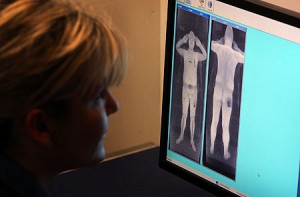
A person checks a body scan image.
Some folks might have no problem having their privacy violated to fly on a plane, but how about a child? Do you know who the TSA agent is viewing those partly-nude images of your child? What if you are not even there with your child?
Recently a 12 year old girl was put through the scanner without her parents consent at Tampa International Airport (the same location where I avoided the scanners). As the girl describes, going into the body scanner happened quickly and she was not aware what the machine was.
The girl was traveling with her friend and her friend’s parents back to her home in Baltimore. The St. Petersburg Times was able to get a phone interview with the 12-year old passenger about her experience:
“Okay, I was coming home to Baltimore, Md., from Siesta Key, Fla., and I was with my friend and her parents and I was going to this airport security check.
I put my bag through, and they pulled me aside and told me to go over here. I thought it was some high-tech scan and I walked right through it and this lady said ‘”Hold on, you can’t just walk through this thing. Put your feet on the yellow footsteps and make a triangle above your head.” I guess it was so they could see my whole body.
I heard a beep and she said, ‘Okay you can leave.’
I heard one of the guards say ‘affirmative on the female,’ and I knew they were talking about me. And that made me worried.
I couldn’t see my friend and her dad, and I was really worried that I was separated from them. I was trying to look happy when I saw them but inside I was really scared.”
I think the parents might be overreacting a bit, they took their daughter to a doctor to have her checked out, but I think there are some important things to consider with this instance. I am more concerned with someone’s child being scanned against their will, since the child does not know what is going on with the body scanners. Heck, most adults don’t know what is going on with the body scanners, but at least they are old enough to be aware of what the body scanners are.
“Our daughter was scared and didn’t understand what was happening,” said Michelle Nemphos, the mother of the girl. “In essence they conducted a strip search on a 12-year-old girl without her parents present to advocate for her.”
Yes, there are little signs showing what the body scanner does, but is that enough? The images it shows are small and passengers do not understand these machines are optional. Even if you think body scanners are a good idea, do you think children should be scanned as well?
Thanks Sam for pointing out this story!
Image: Mirror.co.uk
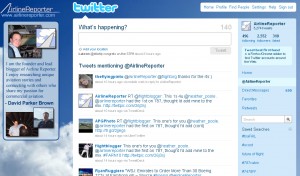
My Twitter page, where all the action happens!
I know I talk about Twitter on my blog quite a bit. I get a mixed-bag reaction from people about what Twitter is and how it works. I use it a lot and link to quite a few interesting stories and photos that I do not share on my blog or on my Facebook.
For those who haven’t stepped into the world of Twitter or maybe you have, but got confused with all the Twitter talk, let me try to help. If you have absolutely no interest in Twitter or learning about it, go ahead and skip this blog.
So what is Twitter? Well, it depends on who you are and what you use it for. If you have a personal Twitter, you probably are going to use it differently than a business one. I use my Twitter to #1 share interesting stories I find that I might not blog about #2 Let you know real-time what I am doing, if I am doing an aviation-related event #3 Connect with airlines, others who write in aviation, and my readers in a way I cannot do with other mediums. If you use Facebook, Twitter is a lot like your status updates. If you don’t use Facebook, Twitter is like a blog and instant messaging that mated and had kids. If you don’t know what blogs or instant messages are, I don’t think I can help :).
The fun part is, unlike blogs or Facebook status updates, you only have 140 characters to make your point, so long-winded folks need not apply.
If you have tried out Twitter you might quickly get confused with all the @ and #’s you see everywhere. It took me a while to get used to it, but after a little practice, it works. I will just keep this simple as if you are just trying to read my and other people’s Twitter feeds.
THE @ SYMBOL:
This is used before a user name to talk about or to someone. I am @AirlineReporter on Twitter. Let’s say you see me Tweet: “hey @danwebbage, I enjoyed meeting you the other day.” That means I am talking to Dan Webb on his Twitter account. He is able to see any message that someone mentions him in and even though I am talking to him, you can still see the message. Let’s say you found this cool airline story and want to share it with me. You could be like, “@AirlineReporter I found this cool, story, what do you think? www.coolstory.com?”
THE # SYMBOL:
The hash sign represents a topic. So let’s take the Farnborough Air Show happening soon as an example. Anyone talking about that topic will put a #FARN10, so if you want to see what anyone is saying about it, you can look it up. For example, recently I did the Virgin America new flight from San Fransisco to Toronto. Anyone who was talking about that experience used #VXToronto.
THE RT:
You probably see “RT” a lot too. This stands for “Re-Tweet” and is when someone copies someone else’s origional message. Let’s say Mary Kirby (@RunwayGirl) just wrote something on her blog and Tweets about it. “Hey check out my cool new blog on in-flight entertainment.” If I like what she is saying and want my readers to see what she is saying, I can RT or repeat what she is saying. It would then look like this, “RT: @RunwayGirl Hey check out my cool new blog on in-flight entertainment.” So you know the original message was done by Mary, but I repeated it. Now if someone then RT’s my Tweet, it can get complicated and look like this, “RT: @AirlineReporter RT: @RunwayGirl Hey check out my cool new blog on in-flight entertainment. ” Someone doing the RT can also make comments. Remember that cool story you Tweeted to me earlier? Let’s say I want to share that with my readers and I RT it with a comment, like this, “Awesome! RT @YouTwitterName: @AirlineReporter I found this cool, story, what do you think? www.coolstory.com?” Don’t worry if it is starting to sound confusing. With a little playing around, you will get the hang of it!
You do not need to create an account to read Twitter, but it sure helps. By creating an account, you are able to add people that interest you onto your friend’s list (that is my friend’s list) and see what they are Tweeting. When you get a little practice you can create groups. Like I created a group of airlines on Twitter that I will look at to see what they are Tweeting about. If you do create an account, it can be totally anonymous, all of Twitter can be anonymous if you want. You decide what information you let people know about.
It is ok if it is confusing at first. It took me a few months to get the hang of it and longer than that before I even know what the #-tag was for. After a while you get used to it and really use it as a resource to see what is going on in the world and connect to people and companies in ways you never have before. You can read about your Aunt Frannie feeding her cat and even hear about awesome travel deals, all in one spot. And I will tell you what…if you run into trouble or have any questions, go ahead and ask me and I will see if I can help you out!
Ok, if you will excuse me, I need to Tweet about this blog now!
To learn more try these out:
* About Twitter page
* The wiki article on Twitter really helps
* Video showing how using Twitter for personal use works








